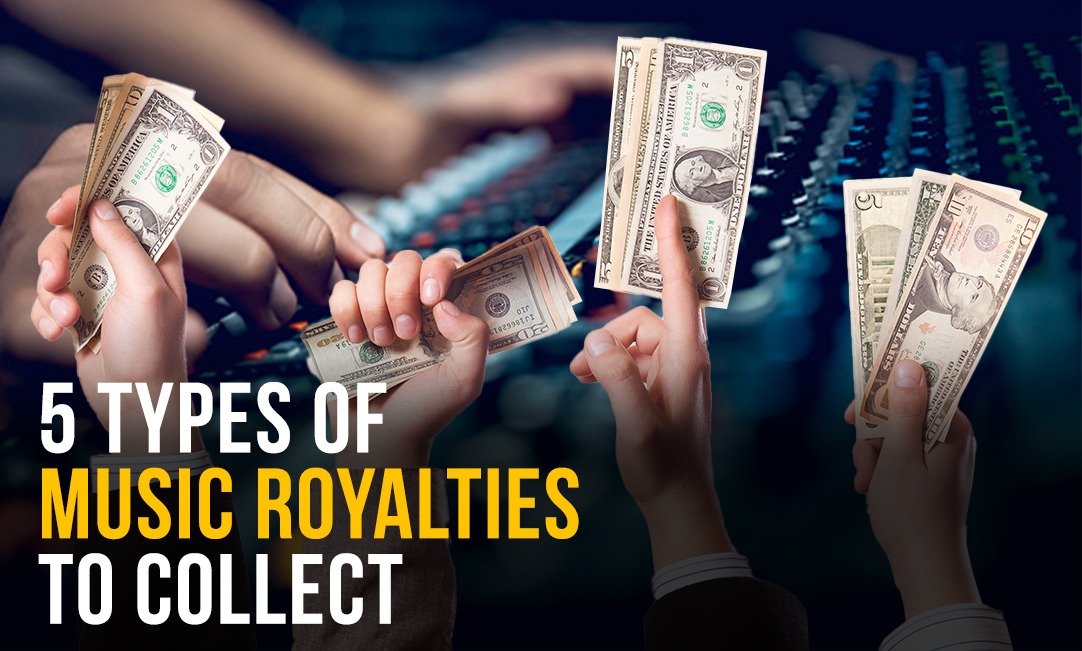5 types of music royalties to collect

Music royalties are remuneration that rights holders (songwriters, composers, recording artists, and their representatives) receive in exchange for the licensed use of their music. Institutions that utilize the music pay royalties, which are collected on behalf of rights holders by intermediary bodies (from tv channels, radio stations, and events to streaming platforms and beyond). The music artists of the professional recording studio are dedicated to their passion with enthusiasm.
1. Royalties on streaming
The emergence of streaming services has made royalties more crucial than ever for recording artists: where music was originally primarily financed by selling discs (which isn't precisely a royalty), recordings are now licensed to streaming platforms, and royalties are paid out for digital streams. Labels and recording artists collaborate with distributors (or aggregators) to get their music onto streaming services and recoup revenues of the professional recording studio.
2. Mechanical royalties
Mechanical royalties are payable to the songwriter when an artist publishes a song to the public, either through a public performance or a sound recording, and are derived from the song's composition copyright. This includes when an artist releases a song for digital streaming on Spotify, Apple music, or pandora; however, they are not the same as the music royalties that streaming providers pay to artists.
3. Performance royalties
Performance royalties are earned when a copyrighted song is performed. When you register a song with a performance rights organization (pro), the performance payments are usually split into two categories: (1) songwriter royalties and (2) publishing royalties. Both types of performance royalties are paid to the specified party through a pro.
The pro pays songwriter royalties to the composition's songwriter and publishing royalties to publishing corporations that represent artists, such as warner music group, universal music group, and sony.
4. Print music royalties
Print music royalties are less common in the other music royalties since they are generated when copyrighted music is transcribed to a print form, such as sheet music, and then sold through a music publisher. Composers of classical music or cinema scores are frequently compensated with print music royalties. When copyrighted sheet music is sold online, another example of when print music royalties are made.
5. Sync royalties
When copyrighted music is "Synced" with visual material, synch royalties are made. When a copyrighted song is utilized in a commercial or a video game, for example, it can produce sync royalties. The "Sync" license to a song is normally held by music publishers, which implies they have the exclusive right to use copyrighted music in visual media. As a result, music publishers typically offer this "Sync" license to persons who want to "Sync" the song with visual material. Music publishers, for instance, can assert any YouTube video that uses a song for which they control the "Sync" license and choose to monetize it to earn music royalties. This means that to earn cash, YouTube will display advertisements on the videos, which will then be used to pay royalties.
Conclusion
In general, music royalties include recording, digital performance, mechanical performance, micro-sync, and print royalties. UNION Recording Studio is a professional recording studio that offers superior sound, competent engineers, world-class equipment, experienced producers, high-quality preamps, and outboard gear at a fraction of the cost of a home studio. The union recording studio's mission is to assist you in realizing the full potential of your voice. Take advantage of our free advice in our articles to get started on your path to being a professional singer and learn about music royalties.